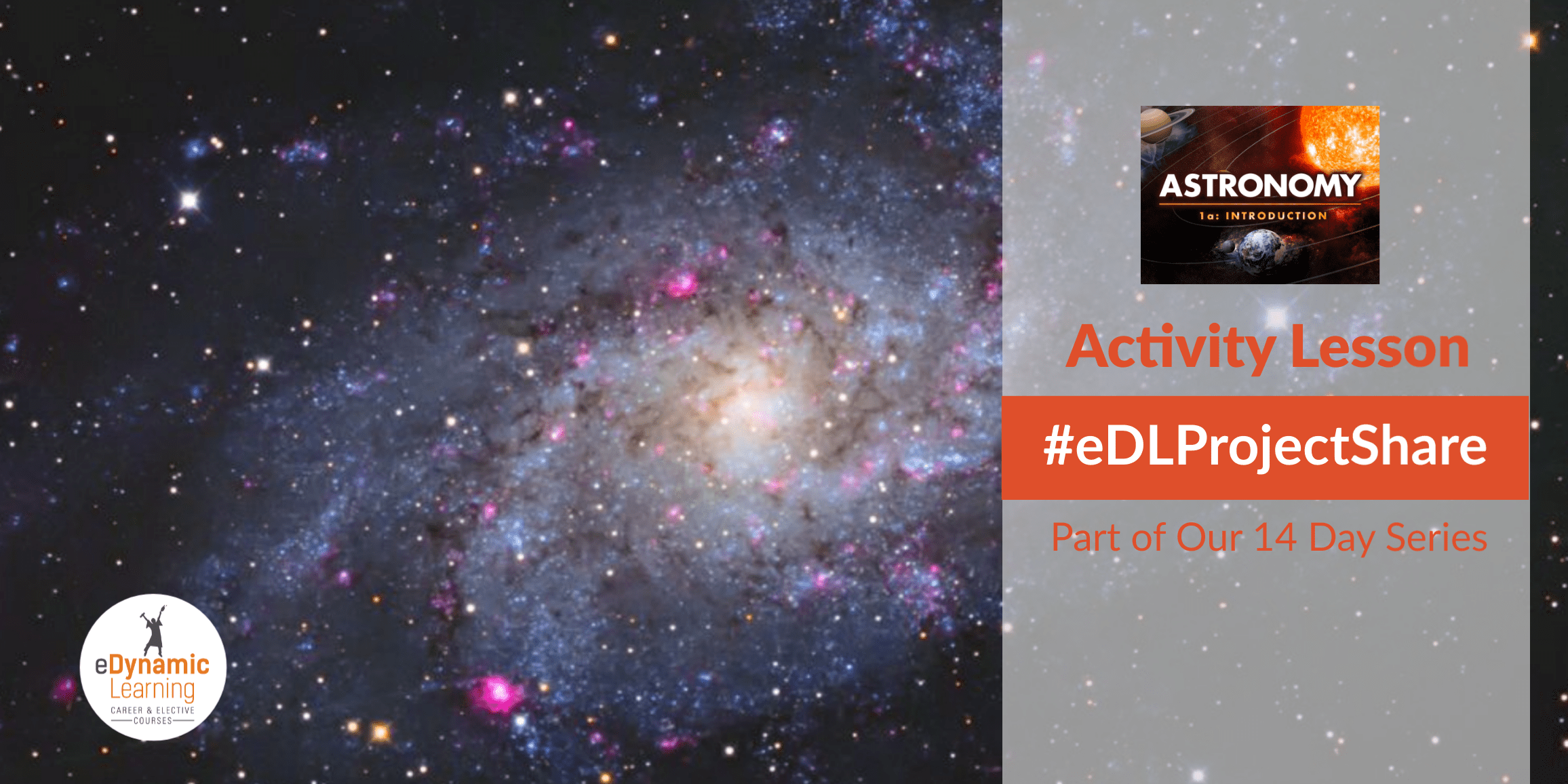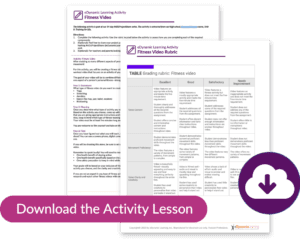
Activity: Observing the Night Sky
April 3, 2020The following activity is part of our 14-day #eDLProjectShare series. The activity is extracted and modified from our high school, Astronomy 1a: Introduction course / Unit 2: Techniques and Tools of the Trade: Studying the Universe.
Directions:
- Complete the following activity. Use the rubric located below the activity to assess how you are completing each of the required components.
- (Optional): Feel free to share your project progress or the final project with a short video or picture on Twitter or Facebook using the hashtag #eDLProjectShare @eDynamicLearning. *If you are under 18, you must have your teacher or parent or guardian’s permission to post.
- (Optional): For teachers and parents looking to use as a graded activity, a rubric worth 15 points is located at the bottom of the activity.
 Activity: Observing the Night Sky
Activity: Observing the Night Sky
Create Your Own Tool
We know that tools like telescopes and sextants help astronomers collect data about the movement of objects in the sky, but what if you don’t have access to those tools? For this activity, you will create a tool that helps you observe the movement of one or more celestial bodies.
Step 1: Observe the night sky for a night or two.
Things that are visible in the sky will change from night to night based on weather conditions, so be sure to glance up at the sky for several nights in a row. When you look at the sky, keep your eyes on the lookout for any object that stands out to you. This could be an especially bright star or even a planet. (You can distinguish a planet from a star because stars typically twinkle while planets do not.) The only requirement is that you choose an object other than the sun or moon. Make sure you are able to view the object for several nights, as you will be asked to monitor its movement for this activity, so you need to be sure the object will remain visible for several days.
After a few nights of observation, select the object you’d like to track.
Step 2: Create a tool to measure the movement of this object in space.
The goal of this activity is to creatively use a tool to measure the way your chosen object moves across space. You may choose to use a finger on your hand as a measuring device, or may actually build something out of wood or another material—the choice is up to you. You may feel free to reference books or articles to gather some ideas as well.
Step 3: Use your tool to measure the movement of your object.
Once you have developed your tool, use it for three consecutive nights in order to track the movement of the celestial object you chose. Note that we are not concerned with how much actual distance your object traveled, as it is likely impossible to know that if we don’t know how far away it is. Instead, we just want to keep track of how your object moved within the canvas of space that is visible to you.
Track your object’s movement in whichever way makes the most sense to you. You may choose to draw a picture of the visible sky and surrounding landscape and mark the object’s location in different colors each night, or you may decide to measure based on a certain unit (say, a centimeter) and create a chart that graphs your numerical results (for example—night 1 the object had moved .5 cm, by night 2 it had moved 1.3 cm, etc.). Choose the tracking method that works best for you, but do employ the same method each night you observe.
If there is a night when your object is obscured due to clouds, weather, or light pollution, simply skip that night and find your object the next night. Your three days of observation do not have to be consecutive, but try to complete your tracking within a week’s time. Also, no matter how you develop your measurement tool, be sure to use it in the same way each time. For example, if you choose to use your hand to measure, hold it the same distance from your face each time you measure.
Step 4: Write a short paragraph reflecting on your experience.
Your paragraph should answer the following questions:
- What tool did you create to track your object? Why?
- In general, how did your object move across the sky? Describe its pattern.
- Do you have an idea about what your object is? How do you know?
To complete this activity, submit:
- Your tracking document (if you need to submit a photo of this, that is fine)
- Your reflection paragraph
Rubric

